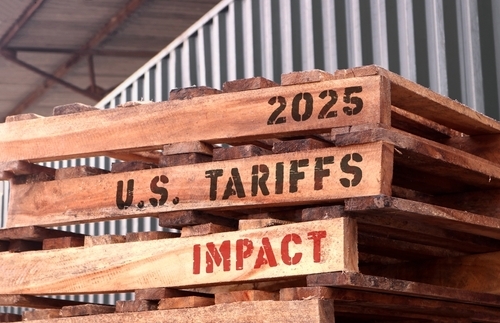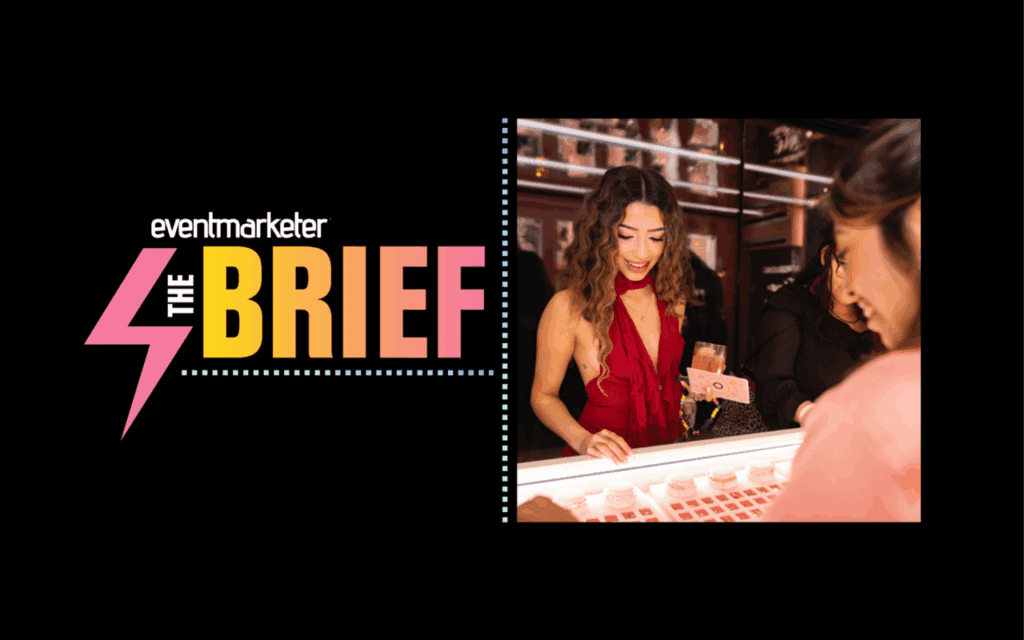Baby products brand Munchkin may have an uphill battle getting approval for the creative for its new patented nipple shield. The just-launched product took a decade to develop and is best understood with a video, said Kristin Pagano, GM of infant nutrition. The former VP of marketing at Munchkin discusses the details of its marketing campaign for the new product.
Baby products brand Munchkin is debuting a first-of-its kind nipple shield with a robust marketing campaign which aims to deliver 150 million impressions to its target audience in the first six months.
The campaign launches March 17 and is Munchkin’s first-ever, out-of-home campaign, said Kristin Pagano, general manager of infant nutrition, and the brand’s previous vice president of marketing.

The product, called the Flow Nipple Shield+, is a product moms can use while breastfeeding. Munchkin has been developing the patented product for the past 10 years and is selling it for $39.99 at Target, Walmart and Munchkin.com.
The Flow Nipple Shield+, which Pagano refers to as “Flow” works like a traditional nipple shield, in which it helps infants latch on to the breast and can ease pain for moms. What’s new is that it contains a tube so women can see the milk coming out of their breast and into the baby’s mouth, unlike traditional shields where moms cannot visually see the milk transfer. Many women struggle during breastfeeding to know if the baby is receiving milk, so this product aims to solve that problem.
Video ads are a key element to marketing flow, Pagano said, as it’s difficult to describe the product with just imagery. But this poses challenges as well. Pagano sat down with Multichannel Marketer to discuss the marketing plan, its challenges and Munchkin’s goals for this innovative product.
MM: Tell me about the marketing strategy for Munchkin’s new product.
Pagano: To take a step back from a marketing strategy perspective, we’re really designing a new category and a new category therefore takes a lot of education. So we’ve really designed a 360-degree marketing campaign to ensure that all prenatal moms are aware of our product, because it is different. That, ‘seeing is believing’ component is important. And so it’s a video-first campaign, which is a little bit different for us. And we’re delivering over 150 million impressions against our target audience in the first six months of our campaign.
The kickoff is really going to be on March 17 in an out-of-home campaign. This is the first out-of-home campaign Munchkin has ever done in our 33 year history, so we’re really excited. And it will be in key markets like New York and Nashville.
So you’ll see a breastfeeding mother on the cube in New York City on March 17. We’ll follow with a full connected TV campaign targeted very specifically at our target market of prenatal moms. We’ll even have doctor’s offices and OB GYN placement, all of it video first. And if you think about how much time you spend both in a doctor’s waiting room and the actual office, we’ll have video placement in both of those locations. So those nine months the mom is spending there, they will see our campaign. And we’re also working with our retail partners to make sure we have secondary placements in the retail channels as well.
MM: Tell me more about those.
Pagano: In all Target locations, we’ll have a display in their breastfeeding set so the moms can actually see and feel the product. Target brings some products on display out of packaging with key messages. So we’ll have that for the first time for a Munchkin product.
And then at Walmart we’ll have sidekicks at 1,459 Walmarts, which is a promotional vehicle, which just has secondary placement with additional messaging.
The product itself is chain wide at both Target and Walmart. So we’re launching with over 5,600 doors nationwide.
MM: Why did Munchkin decide to go video first?
Pagano: Because it is so unique and different. We did focus groups with about 100 moms across six cities in the U.S. and it started as packaging research. What we learned is it was really difficult to convey the message on packaging alone. As soon as we showed the moms the videos, it immediately clicked and they understood the product; they understood the benefits immediately. And in every single room when you asked, ‘Are you interested in purchase?’ every single mom in the room raised their hand, every single time.
So it was really understanding that a simple package or a simple static ad is not going to be enough to sell the product. But as soon as they saw it, it really clicked what the product was and they understood it. That’s the benefit and the challenge of creating a new category is that it is new and innovative, but on the flip side, they don’t necessarily understand from a static image alone.

MM: Do you anticipate any struggle with getting the video out just because of the content of it?
Pagano: I really hope not. We did with the out-of-home campaign. Unfortunately, we did get surprisingly rejected at a couple of locations initially due to the content. But overall, I would say what we are doing is natural you are feeding your baby. We are doing this in a very tasteful and educational way and hope that everyone is supportive of moms and breastfeeding their children.
It really is helping moms understand that this will help build confidence in breastfeeding, which we know is the No. 1 challenge among breastfeeding moms.
MM: What happened when it was rejected?
Pagano: The out-of-home campaign goes live on March 17, but as part of that process to do out of home, you have to submit your creative upfront. And so we did hear from a location in New York, a location in Atlanta that it was rejected.
MM: This was a billboard?
Pagano: Billboards. Out-of-home billboards.
MM: I’m sure you heard about the ads for Molly Baz’s lactation cookies being pulled from Times Square? Does that give you pause at all?
Pagano: Look, if we can use this to spark a conversation about breastfeeding and the benefits of breastfeeding, we absolutely welcome that discussion. We are doing it very tastefully, very educationally with beautiful imagery of mothers nursing their children. I do expect it to spark a conversation, but it is far more than what you see. You see other advertising out there that takes things far further than where we are going with our campaign.
MM: Back to the campaign, how are you going to measure the success and which channels do you think are going to resonate best?
Pagano: Ultimately, I’m going to measure success by, from a high-level perspective, our goal is to increase breastfeeding rates worldwide, right? So that’s my high-level goal. The next step is obviously we are going to be measuring in sales and how we are driving through the channel.
For which channels are going to be most effective from an advertising campaign perspective, I expect everywhere we’re running video to be the most compelling. We’ve run a little bit of connected TV before, but this is definitely our biggest connected TV campaign that’s going to drive through our website.
We also launched a brand new website as part of this campaign, which is really going to help educate beyond everything. So everything will drive back to Munchkin.com, which will have an amazing amount of content and education materials for moms. Anything that drives back to Munchkin.com where we can get people to learn more about the site is going to be most effective.
Out of home will be most effective for generating that little bit of spark and buzz, but not necessarily that full education component. So short answer, connected TV, driving through to Munchkin.com and our brand new website to really educate consumers.
MM: Are you doing any social video ads?
Pagano: Absolutely. This is really all encompassing. We’ll do an influencer campaign as well. So really anywhere you find a new mom, I would expect to see this advertising.
MM: Is your branded website a large contributor to your overall sales?
Pagano: Right now, Munchkin.com is an important part of our overall education experience. For this product, we have a few exclusive offerings that are only going to be offered on Munchkin.com that are only going to make our website an even more impactful destination for consumers.
In retail, we’ll be offering two sizes of the Flow Nipple Shield. On our website, we’ll be offering four sizes. We’ll also be offering replacement kits on our website that will not be available on retail either. So really it is about driving a more comprehensive direct-to-consumer strategy with this product as well.
MM: Can you talk a little bit about why a comprehensive direct-to-consumer strategy is important to Munchkin?
Pagano: Munchkin really wants to have an ongoing relationship with our consumers. There’s no better way than to do that through our own site where we know we can offer them a great experience start to finish. We know we have a customer service team that exceeds expectations always. So anytime we can bring them into the Munchkin universe and the Munchkin family, especially as early on in their motherhood journey as breastfeeding, we really think we can help our overall kind of portfolio of products here at Munchkin.
MM: And then you said the key markets are New York City and Nashville, is that correct?
Pagano: Those are the first key markets for our out-of-home campaign, and we’ll be monitoring those closely to decide if we want to roll that out further.
MM: What are some of the benchmarks?
Pagano: Honestly, from an out-of-home perspective, we’ll be watching a lot from kind of buzz and social media response from that.
MM: How did Munchkin select those two markets?
Pagano: New York is the biggest media market in the U.S. And we wanted to test something a little bit different, a little bit out of the ordinary in Nashville. Seemed like a great market to try. Like I said, we also tried a couple of other markets where we didn’t have as much success getting our creative through and wanted to make sure we could get a high-profile location with a lot of traffic and a lot of discussion and talk value to it. And Nashville, the location we’ve got is one of the most iconic billboards in the city.
MM: And for the doctor’s offices ads, how many offices are you in?
Pagano: We’re starting it with 500 different doctor’s offices. We are using geotargeting based on being close to Target and Walmart locations to make sure that they’re close to being able to easily purchase our product, even though we do have nationwide distribution, just want to make sure it’s easy access for parents and it’ll be playing video both in the waiting rooms and in the offices itself.

MM: And you said this is Munchkin’s first out-of-home campaign. I’m curious why now and why this product?
Pagano: This is the first time in our 33 year history that we are launching an entirely new category. So on top of the innovation, this is an entirely new category to moms. So we felt like this was a great opportunity to step out there and do something different and even more exciting and even more attention grabbing than anything we’ve done previously.
MM: You don’t think this fits in the nipple shield category?
Pagano: I don’t. It is called a nipple shield, so people understand, and it does have the similar benefit to a nipple shield in terms of reducing pain. But it’s selling so much more than a traditional nipple shield. It’s really a baby nutrition device that works like a conventional shield, but is going to show through that patented channel for milk flow, it’s going to offer that visual confirmation to moms that their babies have successfully latched and they’re effectively nursing. A traditional nipple shield will tell you none of those things. It will help you with pain, but it’s not going to help you with confidence in understanding what’s happening through that feeding process.
MM: I’d also love to hear more about the strategy about targeting prenatal women, before they know if they need this product. Do you think that might be a challenge?
Pagano: I actually think it’s an opportunity. We are also running a clinical trial right now, so we have over 300 moms matching the demographic breakdown of the U.S. using our product.
In this study, we are trying to measure things like the effectiveness of the product. One thing we do know is six months in (of breastfeeding) is a very important date, according to the World Health Organization code (The International Code of Marketing of Breast-milk Substitutes), American Association of Pediatrics. Today, about 60% of moms are still breastfeeding at that point. With Flow users, we are at 94% of those moms are still breastfeeding, and all of those moms, 81% in the study, want to add Flow to their registry.
So There’s a big opportunity for us to market to them and educate them before and have this added to every registry process. As moms go through that registry process, have them add the Flow device to their registry so they’re getting it before they’re even going to the hospital to deliver their babies.
We know that moms use it, see that value, see that interest. So it’s our job from a marketing perspective to make sure that they’re aware of it and they know to add it to their registry. So from that perspective, we’re also focusing a lot on registry programs through retailers like Babylist and Target and Walmart.
MM: How are you focusing on registry programs?
Pagano: For Babylist, we will be participating in their registry box. Every mom who registers will receive a Munchkin nipple sizing tool. One of the other pieces about a nipple shield that if you use one is they come in different sizes. So one, we’re helping them with a sizing tool to figure out exactly what size they need. So every mom that registers will get the sizing tool with additional information and literature about Flow. It’ll also link them directly to the Flow website to learn more about the product and so they can add it to their registry.
And then at Target and Walmart, we’re participating in the marketing programs within their registry.
MM: And back a little bit to your clinical trial, it is 300 moms who are actually using the product?
Pagano: Correct. They don’t have to use the product. They receive it on a monthly basis and we’re tracking their breastfeeding journey. But the moms, yes, they are using it.
MM: Do you know if all 300 are?
Pagano: Yes. They all start using it. And then some of them, we ask them how often they’re using it. Some of them are using it every single time. Some of them are checking in as necessary, and some of them used it for the first month, gain that confidence and don’t use it as much anymore. But they all at least started the process and now 94% are still breastfeeding at six months versus 60% of general population.
MM: What percent of breastfeeding women use a nipple shield?
Pagano: There’s no specific data on that. From lactation consultants we’ve talked to and just anecdotal data, we believe it’s about a third of moms.
This interview has been edited for length and clarity.

 Network
Network

